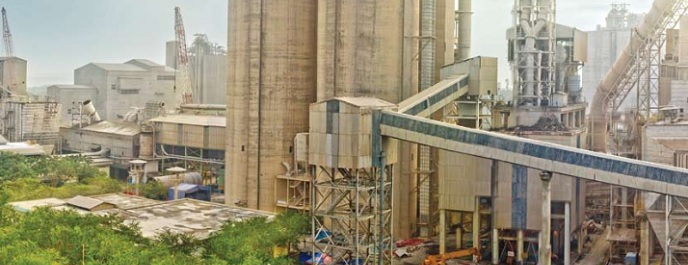Fierce Battle for Market Share in Indonesia's Cement Sector
For Indonesian cement producers it is vital to maintain their market share amid ongoing difficult times. With Indonesia's total installed annual cement production capacity now being around 100 million tons, while domestic demand is only expected to reach 65 million in 2017, cement players are facing weak prices amid a big oversupply, while foreign demand for Indonesian cement is yet to grow. Meanwhile, due to the arrival of various new cement players in Indonesia in recent years, competition for market share has become increasingly fierce.
Therefore, some cement producers are now coming up with new and creative strategies to encourage consumers to buy their products. For example, Indocement Tunggal Perkasa, the second largest cement producer in Indonesia, plans to give specific gifts to buyers (motorcycles, mobile phone credit and even pilgrimages to Mecca). This should make it more attractive for consumers or companies to purchase Indocement's cement (locally marketed under the well-known "Tiga Roda" brand).
Indocement will place certain codes inside their cement bags. When a consumer finds this code, he can send the code through sms to the number that is written on the bag to find out what he has won. Christian Kartawijaya, Head Director of Indocement, is optimistic that this "gift program" will boost the company's cement sales in the next three months. The program will primarily run on the island of Java where cement demand is highest. In full-year 2016 cement sales on Java reached 33.74 million tons, hence accounting for 54 percent of total cement demand in Indonesia that year.

However, cement sales on Java in 2016 fell 2.1 percent from sales in the preceding year. This decline in cement demand is primarily caused by Indonesia's sluggish property sector and infrastructure development projects that are not running in line with expectations. Still, Kartawijaya said Indocement's performance on Java in the first two months of 2017 is actually positive.
Since Indonesia's property sector cooled after 2013 (when Bank Indonesia implemented several measures in order to avert a bubble in the property sector) cement sales growth in Indonesia has been subdued. The years 2011 and 2012 were great years for cement players as domestic cement sales growth rates were 20.0 percent and 14.6 percent, respectively. This then attracted considerable investment in Indonesia's cement sector. Not only established players invested heavily in the expansion of their cement capacity but the growth rates also attracted new players from abroad (while in 2014 there were only nine cement manufacturers active in Indonesia, this figure grew to 14 in 2016). After 2013, however, cement sales growth rates have been bleak (see the table below).
Indonesian Cement Sales 2008-2016:
| Year | Cement Sales |
YoY Growth |
| 2016 | 62 million | +1.6% |
| 2015 | 61 million | +1.8% |
| 2014 | 60 million | +3.3% |
| 2013 | 58 million | +5.6% |
| 2012 | 55 million | +14.6% |
| 2011 | 48 million | +20.0% |
| 2010 | 40 million | +4.2% |
| 2009 | 38.4 million | +1.1% |
| 2008 | 38 million | - |
Source: Indonesian Cement Association (ASI)
Another obstacle in Indonesia's cement sector is (potential) government intervention. For example, shortly after Joko Widodo became the new Indonesian president he ordered listed, yet state-controlled, cement producer Semen Indonesia to lower cement prices in order to boost cement sales and encourage macroeconomic development. Within Indonesia's cement sector Semen Indonesia is the clear market leader and its competitors had no other option than to lower their prices as well.
Regarding cement sales in 2017 we expect to see another modest growth figure (below 5 percent) supported by government-led infrastructure projects. Due to Semen Indonesia and Semen Baturaja's closeness to the government, these companies should benefit most from the government-led infrastructure development projects.
Market Share in Indonesia's Cement Sector:
| Company | Product |
February 2017 |
February 2016 |
| Semen Indonesia | Semen Indonesia | 42.2% | 39.9% |
| Indocement Tunggal Prakarsa | Semen Tiga Roda | 25.0% | 26.2% |
| Holcim Indonesia | Semen Holcim | 15.8% | 17.0% |
| Semen Bosowa Indonesia | Semen Bosowa | 4.5% | 6.0% |
| Cemindo Gemilang | Semen Merah Putih | 3.4% | 2.2% |
| Semen Baturaja | Semen Baturaja | 2.3% | 2.2% |
| Conch South Kalimantan Cement | Semen Conch | 2.0% | 1.8% |
| JuliShin Indonesia | Semen Garuda | 1.4% | 1.4% |
| Siam Cement Group | Semen Jawa | 1.9% | 1.9% |
| Sinar Tambang Arthalestari | Semen Bima | 1.1% | 1.1% |
| Semen Kupang | Semen Kupan | 0.4% | 0.3% |
Source: Indonesian Cement Association (ASI)
Recommendation Indonesian Cement Stocks:
| Company | Recommendation |
PER (x) |
PBV (x) |
| Indocement Tunggal Prakarsa | Buy | 13.4 | 2.0 |
| Semen Baturaja | Sell | 73.2 | 7.2 |
| Semen Indonesia | Buy | 13.6 | 1.8 |
| Cement Sector Average | Neutral | 24.1 | 2.8 |
Source: BCA Sekuritas
